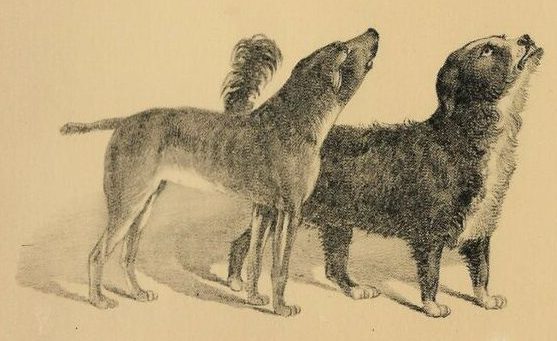Bummer and Lazarus are the most famous dogs in San Francisco’s history.
Maybe even in California’s history.
Between 1861 and 1865, the two mongrels are a much-celebrated duo, famed for ridding the city’s restaurants and businesses of rats. Their strolls around Montgomery Street and their other activities are featured daily in the press.
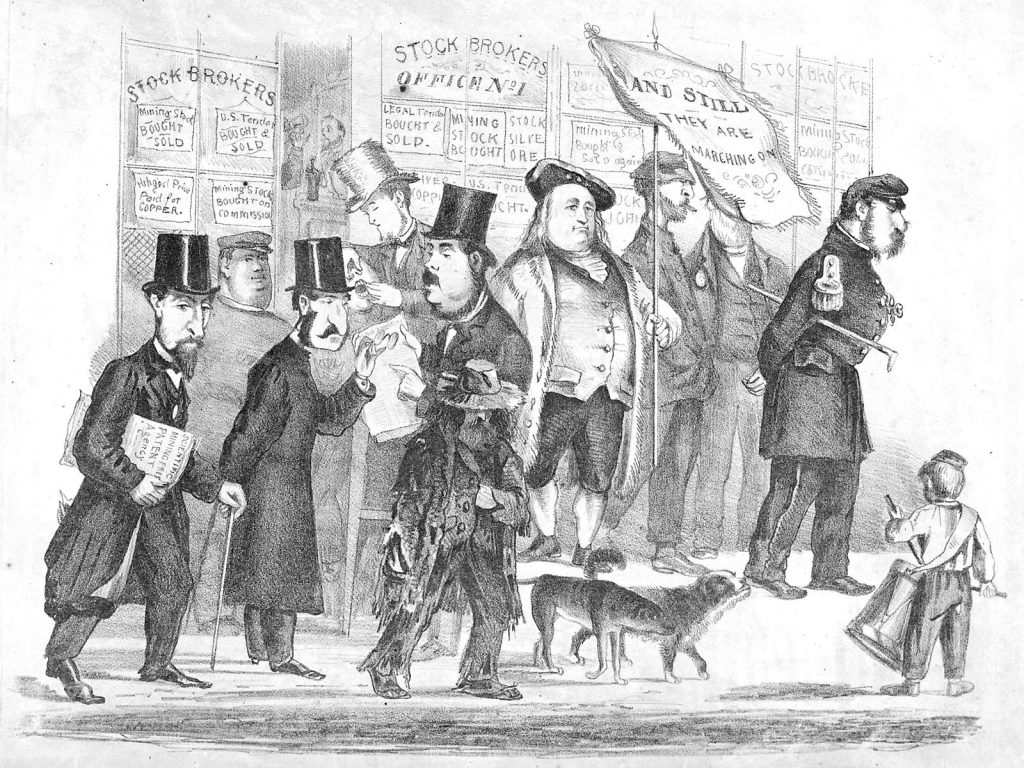
(Emperor Norton is at rear right. To his left is Frederick Coombs, who believes himself to be George Washington) Public Domain
Their story begins with Bummer, a somewhat homely dog that finds his way to San Francisco after spending his puppy years as a part of General Lander’s trailblazing expedition to Idaho and then failing as a sheepdog in Petaluma.
A San Francisco newsman, Ned Knight, takes a liking to him and brings him to the city. One of the favorite haunts of newsmen of the day is Frederick Martin’s saloon. It is here that Bummer develops sure-fire methods of “bumming” morsels from diners. Hence, his namesake.
Bummer endears himself to the saloon’s newspaper crowd, becoming even more endearing when he displays his special talent as a ratter, violently dispatching the vermin infesting the wharf businesses of the day.

One night, Bummer leaps into a melee in which a marauding gang of dogs attacks a scrawny cur. Bummer’s ferocity scares away the vicious creatures, thus saving the life of the bloody mutt. He drags the wounded dog to a safe spot and nurses him back to good health, with food he has “bummed” from nearby restaurants.
The newspaper crowd who witness Bummer’s heroics name the rescued dog Lazarus, after the Biblical character who Jesus raises from the dead.
Together, Bummer and Lazarus share many San Francisco adventures, well-chronicled by the news media who know a good “canine interest story” when they see it. The two dogs become legitimate heroes when they bring their incisors to bear on hundreds of rats fleeing into the streets from a building being demolished.
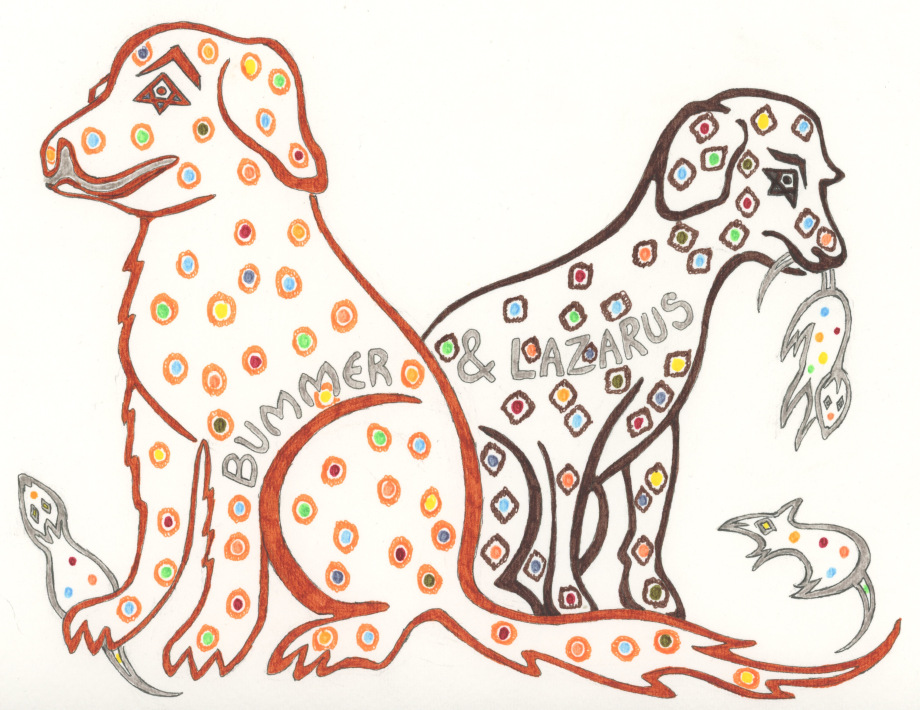
The duo charge valiantly into the wave of vermin. It is said that they kill more rats that day than any dozen other dogs put together. One newspaper says Bummer and Lazarus eradicate 400 rats that night. Another media report luridly describes how they butcher 85 rats in less than 20 minutes.
Declares the San Francisco Bulletin: “The town rings today with stories of their prowess in this line.” Everyone, from politicians to priests, young children to sailors hears about the titanic battle with the rats.
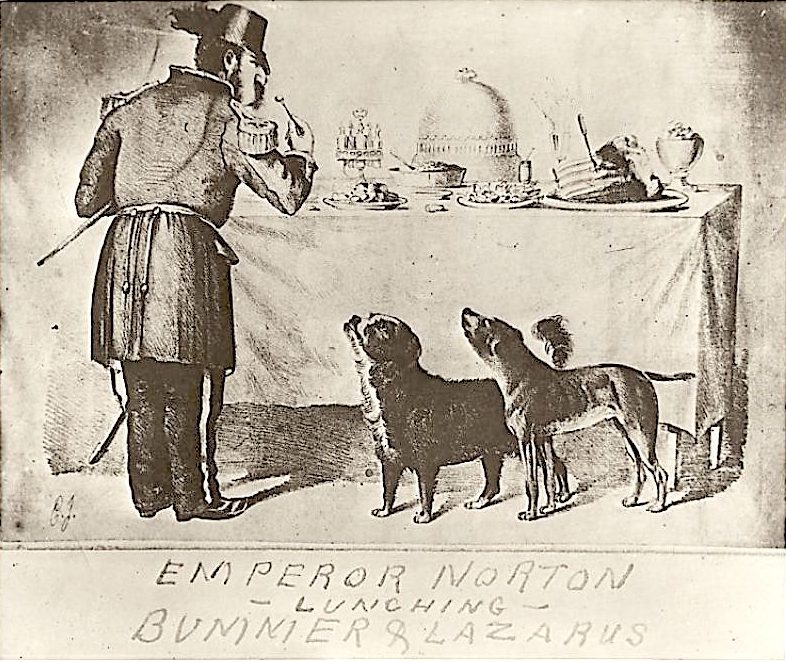
Shortly after that night they meet Emperor Norton, the city’s most renown character.
They join the Emperor on his regal perambulations, forming a 10-legged parade that elicits smiles from passersby. The three are featured in news stories and cartoons drawn by Edward Jump.
Due to their celebrity, the dogs are given a reprieve from leash laws enacted because of the overwhelming number of dogs in the city. They are also forgiven for the havoc they wreak in a jewelry store they are accidently locked in overnight.
But their privileged status does not insulate them from harm. One day,, Bummer is shot by two men up to no good. Bummer pulls through but discovers that during his convalescence Lazarus has joined another pack of dogs.
Eventually Lazarus returns and Bummer forgives his friend. They return to their tours of the city and rat extinction. But then Lazarus is fatally poisoned by a man mistaking him for the dog that bit his son.
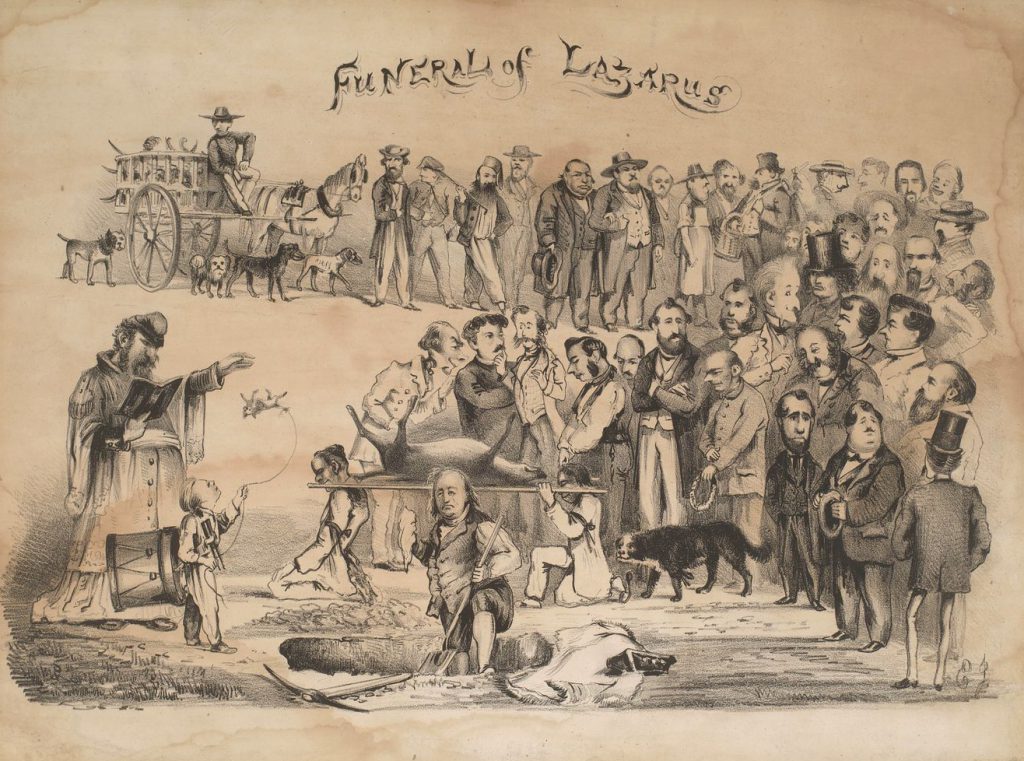
Bummer never recovers from the loss of his friend. He becomes increasingly lethargic, giving up his city-wide rambling and anti-rat crusade. His gait is no longer a proud strut but a plodding shamble. He mopes around town, his life ends when a drunk kicks him down some stairs.
Mark Twain writes a eulogy for Bummer, suggesting that the dog will soon be forgotten:
“The old vagrant ‘Bummer’ is really dead at last; and although he was always more respected than his obsequious vassal, the dog ‘Lazarus,’ his exit has not made half as much stir in the newspaper world as signalized the departure of the latter.

“I think it is because he died a natural death: died with friends around him to smooth his pillow and wipe the death-damps from his brow, and receive his last words of love and resignation; because he died full of years, and honor, and disease, and fleas. He was permitted to die a natural death, as I have said, but poor Lazarus ‘died with his boots on’ – which is to say, he lost his life by violence; he gave up the ghost mysteriously, at dead of night, with none to cheer his last moments or soothe his dying pains.
“So the murdered dog was canonized in the newspapers, his shortcomings excused and his virtues heralded to the world; but his superior, parting with his life in the fullness of time, and in the due course of nature, sinks as quietly as might the mangiest cur among us. Well, let him go….
“It was evident to all that the dog had had his day; his great popularity was gone forever. In fact, Bummer should have died sooner: there was a time when his death would have left a lasting legacy of fame to his name. Now, however, he will be forgotten in a few days.”
Twain is dead wrong. For 40 years, the stuffed bodies of Bummer and Lazarus grace their old haunt, Martin’s Saloon, before being placed in permanent storage.
And, in 1992, a plaque is placed at the base of the Transamerica Pyramid, honoring the two.

________
A San Francisco native, Ed Martinez is a reference librarian at the Redondo Beach Public Library. He has a bachelors degree in history from Stanford University and a Master in Library Science from the University of California at Berkeley.
